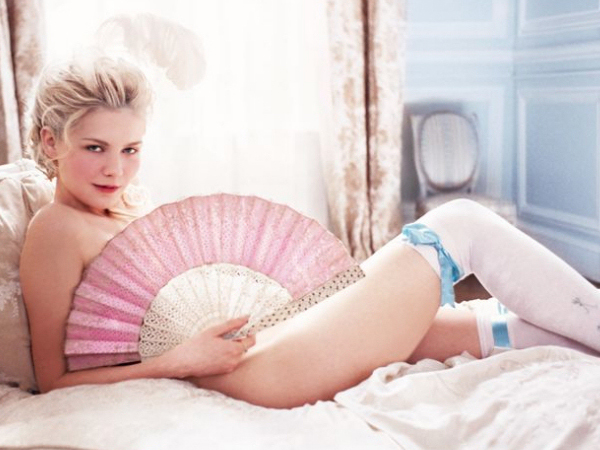Movie review by Greg Carlson
Nathan Lee recently wrote that to accuse Sofia Coppola “of lacking ideas presumes she has any interest in them.” While this left-handed compliment deflects a certain type of negative criticism often leveled at Coppola’s still emerging filmmaking style, “Marie Antoinette” will likely frustrate more viewers than it enchants. To be sure, her gossamer spin on the famous royal should not be judged on its historical accuracy or its fealty to storytelling conventions. Had the director rehashed the expected Marie Antoinette signposts, such as the Affair of the Necklace or the queen’s trip to the guillotine, imagine how the critics would have howled at her.
“Marie Antoinette” is not a bad movie. On the contrary, Coppola manages for the third time to capture the quintessence of a certain kind of isolation and loneliness, and she does this with an authority that eludes most filmmakers. Unfortunately, Coppola also refuses to take any risks with relationship development. Throughout the movie, the filmmaker stubbornly resists exploring the bond between Marie Antoinette and her husband Louis XVI. Dialogue is always eschewed in favor of exhilarating montage, and this is where the writer-director ultimately comes up short.
Not everyone will appreciate the casting of Kirsten Dunst in the title role, but the choice is perfectly suited to the thematic foundation upon which Coppola builds her version of the tale. The movie reminds us that Marie Antoinette was only fourteen when she was married off to the French dauphin. As seen through the eyes of a young girl, “Marie Antoinette” replicates the rhythms of teenage existence, alternating between sleepyhead somnolence and giddy hyperactivity. The film roars to life whenever there is an opportunity to indulge the queen’s passion for parties and shopping. Shooting at Versailles does wonders for the weight of the film’s overall design presence, but Milena Canonero’s opulent costumes seal the deal, and steal nearly every scene.
Coppola further hammers home her strategy of contemporization by scoring the film with an armload of bulletproof rock tracks, many from the late 1970s and early 1980s. The song choices have a mesmerizing effect on the scenes they accompany, and for viewers of a certain age, their incorporation will set off a heady rush of nostalgia. Bow Wow Wow’s version of “I Want Candy” bounces along with images of conspicuous courtly consumption, as all manner of chocolates, libations, gowns, and shoes (including a quick and winking glimpse at a Chuck Taylor canvas All-Star sneaker) fill the frame. Additionally, Gang of Four, New Order, the Cure, and Siouxsie and the Banshees adroitly match the visuals with which they are paired.
Coppola’s decision to largely ignore the political upheaval taking place outside Marie Antoinette’s window mutes the impact of the film’s final movement. The queen has been so thoroughly cut off from the commoners that even a grand gesture of respect, eerily shot on the same balcony where the historical event took place, fails to arouse the kind of breathtakingly awed response it intends. The very final set of shots moves to reclaim some of the territory lost by so completely focusing on the title character’s spacey, shallow narcissism.
